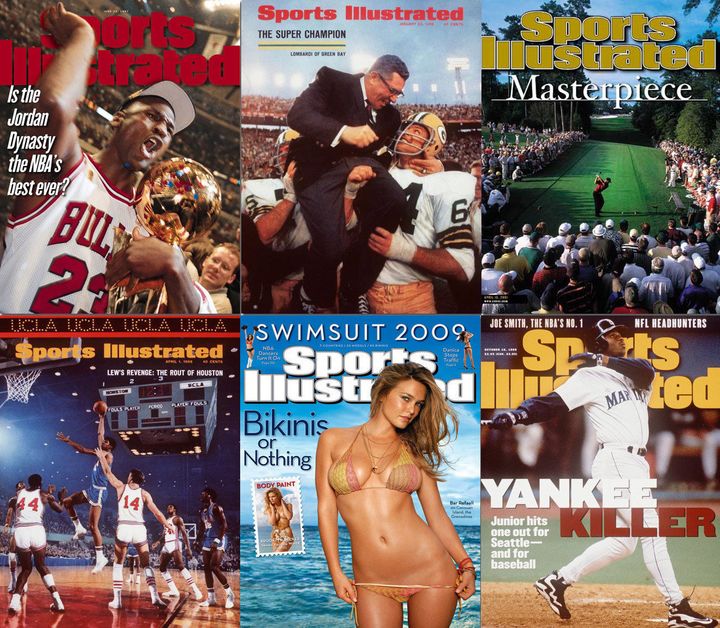
Sports Illustrated released its covers book last week, a full-size volume that documents the iconic magazine's covers since its inception in 1954. Sports Illustrated: The Covers also features detailed introductions from numerous SI editors.
The Huffington Post recently asked Greg Kelly, who edited The Covers, several questions about the history and process of Sports Illustrated's covers. See below for his answers, including a look ahead at the future of the publication's cover design.
How and when is each issue's cover photo determined? How many people are involved in the decision-making process?
Only one person makes the decision--the managing editor--but he gets a lot of input from the art director, the photo editor, various assistant editors. Mark Mulvoy, who was the M.E. for 10 years in the '80s and '90s, used to say that the news dictated about two-thirds of the covers; the rest is where he earned his keep.
As for when the decision is made, that gets tricky. Some are planned weeks in advance; some are changing hours before deadline. The best example might be the Ben Johnson cover from the 1988 Olympics. Johnson had set a world record in the 100 meters and was all set to be on the cover with a billing that said "WHOOSH." But just hours before the magazine went to press, an SI writer in Seoul confirmed a tip that Johnson had failed his drug test. So the picture stayed the same, only with a billing that read "BUSTED."
In 2009, only one woman made the cover of Sports Illustrated, and it was for the swimsuit edition. Is diversity ever considered when selecting a cover photo?
Sports is by its nature so diverse that it's rarely an issue. And as the book shows, women athletes have contributed as powerfully to SI's cover history as they have to sports itself, going back to skier Jill Kinmont who was on the 25th cover of the magazine and, unfortunately, helped launch the legend of the SI cover jinx. (The magazine was still on the stands when she was paralyzed in a skiing accident.) That said, there have been some egregious omissions in the magazine's history, as the book acknowledges. Annika Sorenstam never had an SI cover. That's shameful, even if there aren't that many golf covers every year. Then again, the Toronto Maple Leafs have never been on the cover either, and they've been around for 93 years.
Do some sports typically sell better than others? Does this type of consideration affect who is featured on the cover?
Oh, certainly. Commerce is always part of the equation. Football is king in America these day, and that's why you'll see NFL players on the cover even in the middle of July. The readers apparently can't get enough football. But SI is a fairly unique magazine in that about 90% of its readers are subscribers and it doesn't rely as heavily on newsstand sales as some publications. So it can sometimes use the cover to alert readers to an important story -- like Global Warming, for instance -- even if it's not a huge seller. And the readers seem to appreciate that.
The book affords readers the opportunity to see how SI's cover design and aesthetic have changed over time. While past covers sometimes featured dogs or a grizzly bear, the covers today are more likely to include photographs of athletes from the most mainstream sports. In July, the cover of the iPad edition of Sports Illustrated was swapped midweek after George Steinbrenner died. Is the weekly cover here to stay, or are we witnessing the end of an era?
That's the 64-million megabit question. But I think there will continue to be an SI cover, even on tablet editions. The new technology will just give the editors more options, as it did with Steinbrenner's death. There's a wonderful example in the book of how technology has changed
things. When SI first started, the covers were printed from heavy plates that had to be shipped to various printing plants around the country. That required a lot of lead time, and events didn't always cooperate. In 1957, the editors decided to put Cincinnati shortstop Roy McMillan on the cover in September because the Reds looked like a lock to go to the World Series. What happens next? The Reds completely folded and it was too late to change the picture. All the editors could do was change the words. So as the Series was about to get underway between the Yankees and Braves, there was the Reds infielder on the cover, with a billing that said: THE BEST WAS NOT QUITE GOOD ENOUGH. Nobody misses those days.
--
Sports Illustrated: The Covers is available here.
